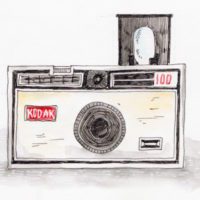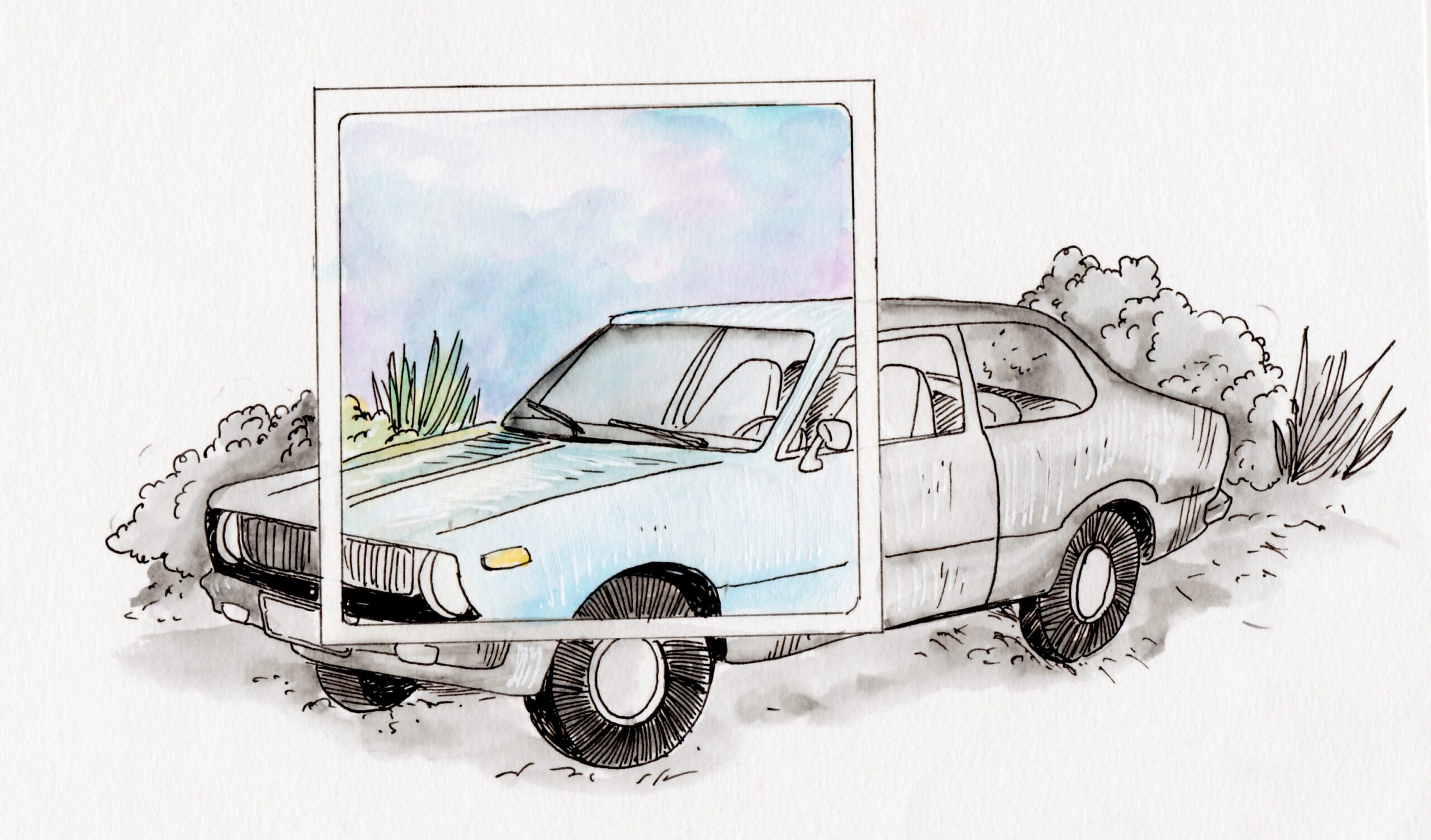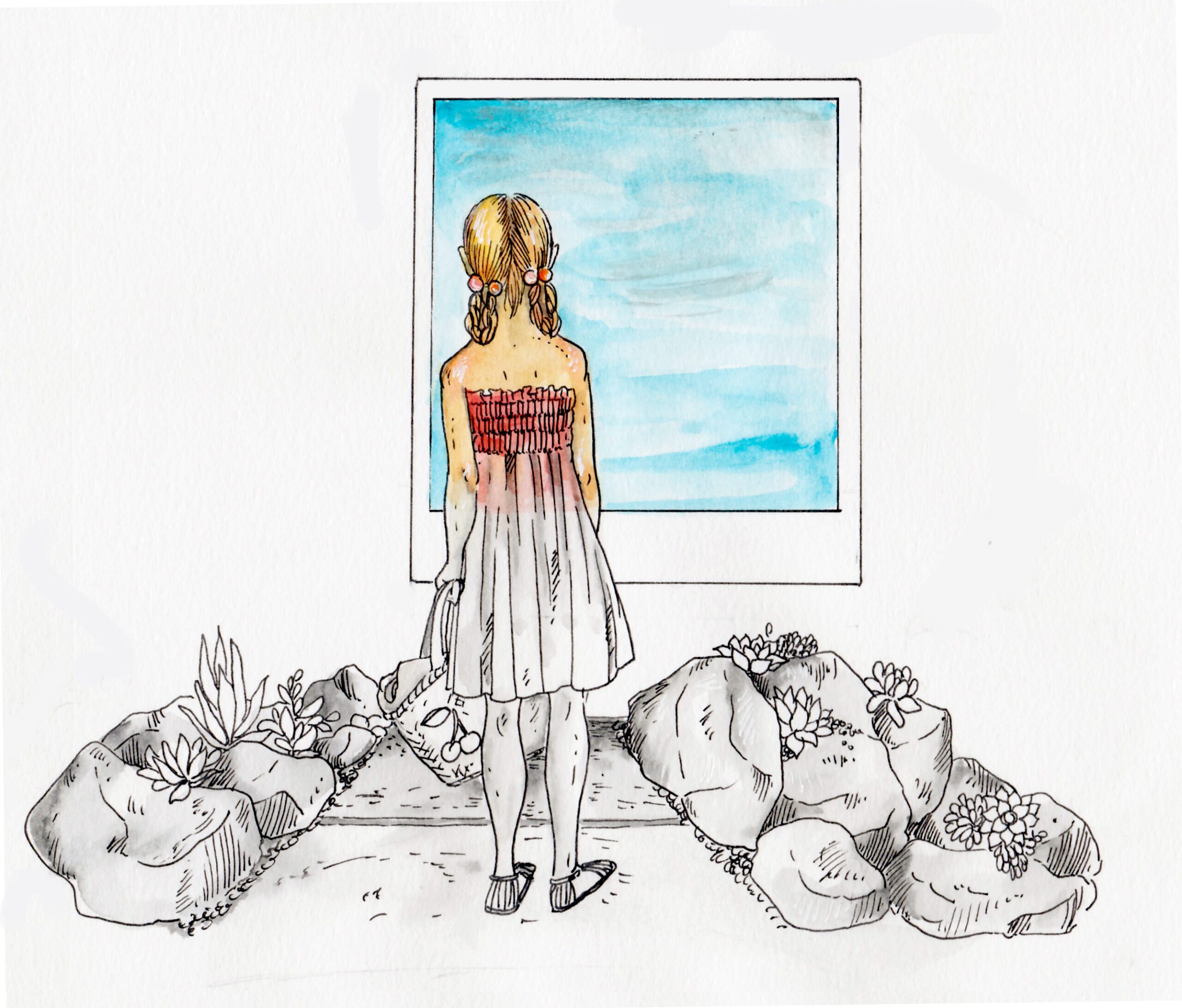My mother pulls the baby blue Toyota Corolla into my grandparents’ driveway. I have been sitting in the back seat, my sister Lily in the front, and we’ve been fighting about it for the fifteen-minute car ride over with the windows open. I’m eleven, maybe twelve, and she’s eight, maybe nine. We are here to go swimming in my grandparent’s in-ground pool.
My world had a flatness to it then that for a long time I thought had to do with topography—because all the farms around Rochester were slowly getting turned into suburban housing, and what I could see was limited to houses replacing pasture in some single plane of space. I only know this looking back. I had no reason to think this at the time because we only ever drove places, and I had little sense of grade. Looking at a topographical map tells me this is true. But the world was flat in another way, the way it was before Columbus, because it seemed that no one in my family knew what lay beyond Buffalo, an hour west, or Syracuse, an hour east. There wasn’t any need to leave home for anything, really, except in the summer, when there was nowhere for the flat heat to go, and that is when my mother would get us in the car and drive two towns over to my grandparents’ house, and we would go swimming.
We enter through the garage. The concrete floor is smooth and cool and dusty from where my grandfather has swept it clean. My grandparents’ tandem bicycle leans against one wall. My grandmother doesn’t know how to ride a bike, so this is how they ride together, with her pedaling on the back. His workbench lines the back wall, and wooden cases of soda are stacked on top of each other. My grandfather comes up from the garden, through the enclosed porch, greeting us with instructions: “Pick out your pop.” My sister and I chose from the quart glass bottles, green for ginger ale, clear for orange, brown for root beer or cola. Bottles in hand, we follow him through the house, which is shut up tight. Everything inside is dim. The blinds are all drawn to keep the house cool.
Out back, we walk across the patio through the rock garden—a banked garden that runs the length of the house, filled with ugly little cactus-like plants my grandmother calls hens and chickens. The patio and the stairs that run through the garden down to the yard are all made of concrete cinder blocks. They are gray like lava and feel like pumice on my bare feet. There is never any furniture on the patio.
When I think of swimming at my grandparents’ house in the ‘70s, most of what I see is repetition and distance. I’m watching it unfold, cinematically, the same scene played over-and-over again for half a decade. It’s as if a video artist has put a Super 8 home movie on an endless repetitive loop, as if Ed Ruscha shot my childhood instead of stills of twenty-six gas stations. The question, as with Ruscha’s photographs, is whether or not repetition and the chance pointing of the camera means anything, or when, exactly, it starts to mean something.
Somewhere there may be more specific evidence than my memory—Kodachrome slides and Instamatic snapshots and spools of home movies. My family was a Kodak family: everything was bought with Kodak money, earned from manufacturing the small precise parts of various cameras meant to see your family, or the moon, more carefully. The pool was a Kodak pool, the house was a Kodak house, the pork roast and manicotti at Christmas were Kodak pork roast and Kodak manicotti.
Snapshots and slides and home movies insist that small, incremental moments mean everything. They show me that yes, something happened, but that something is almost always nothing: how many Christmases did I watch the movie of my Uncle Dennis dressing up the family dog, Boots, in a basketball uniform? Is it a scene? Yes? Is it a story? Does it mean something? Only insofar as the twenty-sixth gas station is meant to be distinct from the first. And it isn’t. It’s meant to be a typology.
The vegetable garden bordering the pool is filled with rows of zucchini, eggplant, tomatoes. The cukes are for pickling and the green beans for freezing. My grandfather stops weeding to do pool chores while we swim. My mother sits and smokes a menthol cigarette. My grandmother stays crouched in the garden, weeding. She doesn’t know how to swim. My grandfather is never still. He cleans the pool, or checks the pool chemistry, or runs the garden hoses he has filled with water, looped out across the yard, and heated by the sun, into the pool. There is a little changing shed—they call it the cabana—behind the diving board. It’s wallpapered with the Sunday funnies. It can take hours to change, reading about Sir Lancelot and Nancy and Charlie and Lucy.
My sister and I had to swish our feet in a little tub of water by the pool’s chain link gate in case there is any grass on them from walking across the lawn. There may have been pool toys—the kind that are weighted and drop to the bottom and have to be retrieved by diving down like a suburban Jacques Cousteau, but if there were, my mother would have quickly tired of the game. I have no memory of lingering in the water, or playing with my sister.
What I remember was that swimming was perfunctory. The characters would change depending on whether or not it was a weekday or a weekend. On weekdays, it was often just the three of us visiting. It was a great relief from the flat heat (that seemed to be percolating out of the ground in those summers) to swim in the pool, but we barely swam. We got in, got out. There was a great deal of inaction, as if the characters did not quite know their roles, or if the plot were somehow truncated. Perhaps the perfunctory aspect came from the fact I knew, the way a child knows, that my mother didn’t want to be there. The pool was a snare. No good mother would keep her children from visiting their grandparents and going for a swim.
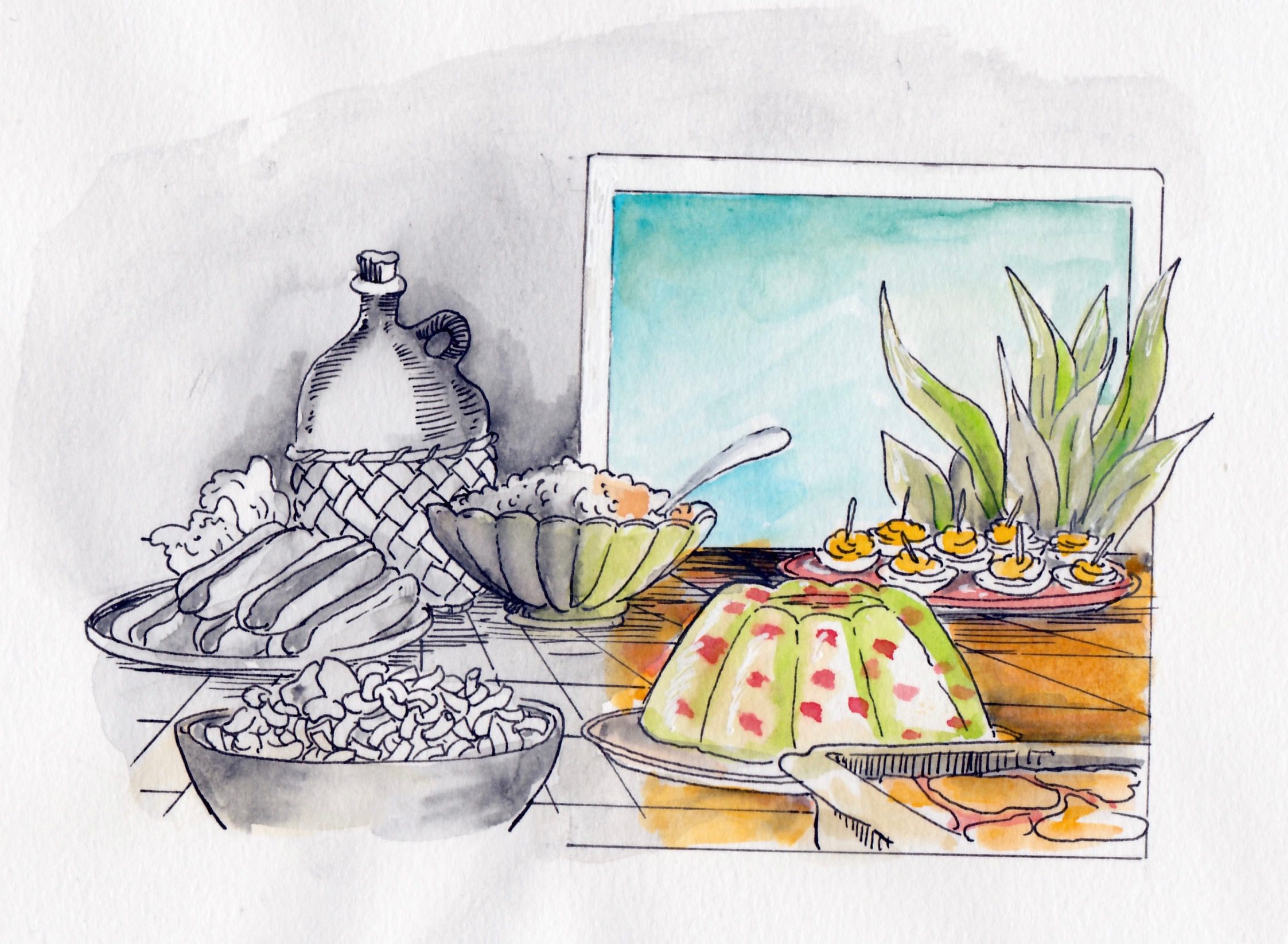 The weekends were another kind of perfunctory, which is to say a different, more complex performance, but this time with aunts and uncles and cousins, hot dogs and potato salad, unbearably slimy chicken cacciatore, and glistening Jell-O salad. The rituals were similar, the plot more complex. On the weekends, my grandmother stayed in the kitchen. My grandfather was in full padrone mode, presiding over the long table set out on the porch, pouring pink Niagara wine from a gallon glass jug into short little wine glasses or mixing up whiskey sours for my aunts, and always having the last word in every conversation. The padrone part of it had also to do with a quiet seething pride. He had made something—everything—from nothing for every person seated at that table. His three children, his half-sister, his lazy, on-the-dole stepfather. The tract house on old farmland, two cars in the garage, that spotless floor, the pool, built for the grandchildren. Everything, all of us, was his. In 1972, my mother uttered the most insightful sentence of her marriage: “The Godfather is not fiction. I’m living it.”
The weekends were another kind of perfunctory, which is to say a different, more complex performance, but this time with aunts and uncles and cousins, hot dogs and potato salad, unbearably slimy chicken cacciatore, and glistening Jell-O salad. The rituals were similar, the plot more complex. On the weekends, my grandmother stayed in the kitchen. My grandfather was in full padrone mode, presiding over the long table set out on the porch, pouring pink Niagara wine from a gallon glass jug into short little wine glasses or mixing up whiskey sours for my aunts, and always having the last word in every conversation. The padrone part of it had also to do with a quiet seething pride. He had made something—everything—from nothing for every person seated at that table. His three children, his half-sister, his lazy, on-the-dole stepfather. The tract house on old farmland, two cars in the garage, that spotless floor, the pool, built for the grandchildren. Everything, all of us, was his. In 1972, my mother uttered the most insightful sentence of her marriage: “The Godfather is not fiction. I’m living it.”
*
Is this what it’s like to watch surveillance footage? Looking for one imperceptible divergence from ordinary and predictable foot traffic? Because there is one weekend, one memory, that does surface. It’s a weekend, and I am the age children are when they learn to swim in the deep end. Until then I’ve worn what we called “the bubble,” a large, capsule-shaped piece of Styrofoam that clips around my waist. My mother is in the pool too. Is she there with a purpose, or by chance? Is the arrangement that I am to swim towards her? Or do I swim into the deep on my own, and she happens to be there? My father stands at the side of the pool, holding a long pole, the kind my grandfather uses to skim leaves from the pool’s surface. I am supposed to grab the pole if I feel scared.
There is water everywhere, and suddenly that little kidney-shaped pool feels like an ocean. I can’t remember if it’s the depth of the water that triggers my fears or if it’s a weak stroke or if it’s from just thinking too much: I am in the deep end. But there is my mother, somehow. I’ll be fine. I reach for her and falter at the same time, or maybe I falter first and then reach for her to hold on to. She pushes me away, and the force of her push forces my body down under the surface of the water. Under water there are no ninety-degree angles. There’s nothing to hold onto, nothing to brace myself against. I don’t know what to do to bring my body up out of the water. I’m not so much swimming at that moment as I am clawing the water, as if trying to grasp rungs on a ladder.
My head comes back up, I gasp, and I reach for her again. Again she pushes me away. I remember my father watching, but not speaking. He can’t read the scene. I can’t find words to tell her how scared I am, and she can’t, for some reason, read the scene correctly either. Again the push away is a push down, and then my head is under water again. I can’t remember what happened next. Either I reached for the side of the pool, or my father moved the pole closer. What I know for sure is that she did not reach for me.
How does one scene impress itself on us, so that we remember it better than we should if we were in it? Or rest, just below the surface, present, but unnoticed? Is this a promise of memory, or a threat—the creative power of dissociation?
This is the story of my childhood in a scene. There is some small moment, what should be an unremarkable domestic scene acted out in any one of a number of middle American suburbs filled with beautiful homes and good public schools. It goes quietly wrong, so quietly you wouldn’t notice it in the snapshot or slideshow or home movie version because the form would overpower the content. In it, there’s a daughter—me—precociously aware of narrative conventions, learned from the Nancy Drew mysteries I loved so much and from watching The Waltons and Little House on the Prairie on TV. I know what is supposed to happen, what doesn’t, and what does. I know the exact moment things go wrong. I become so good at it I know the moments before they happen. I know the plot.
Long before that happens, though, I learn to watch. I notice characters and scenes. I knew the plotting was off but tried not to think about it. A plot implies the power to change things and this is a power that children, by definition, lack. Instead, I taught myself to question the very idea of a narrative, to detect the borders between narrative conventions and this other thing, this thing that happens to me when I am in things that do not comply with expectations of a plot even as I am wishing and longing every single minute that they would.
*
So I become a camera. Eyes equal viewfinder. My body is just a vehicle for the continuous home movie in my head. I compose scenes everywhere I go even though I never hold a camera to my eyes or press a shutter. The world becomes one continuous tracking shot, begun again and again, everywhere. The appeal of this kind of shot for filmmakers is that the camera expands the visual field so far that the subject’s point of view is inscribed in what is made visible beyond what might be reasonably understood to be in the seeing subject’s line of sight. The camera, in other words, sees more than any single person could see or know. That I organized my sight this way, or learned to see this way, may have been an act of optimism on my part, as if I could see into my future.
At sixteen, finding those scenes is what occupied me in my daily summer runs, which began by crossing the grounds of my old elementary school, down Grosvenor Road, up Highland Avenue toward the reservoir, and then looping down Monroe Avenue in a straight shot into the center of town and then back out Elmwood Avenue toward the Oak Hill Golf course and home. I saw scene after possible scene, in overlapping panoramas: lawns are lush, houses set back from the road. These flashing tableaux, I now know, are the kinds of shots film editors and cinematographer look to start a film. They telegraph a start and signal narrative possibility, hope even—the story can go in any direction. If I had been a camera, or had one pressed to my eyes, I might have pressed the shutter. I might have seen, or found, what Cartier-Bresson called the decisive moment—the moment when the photographer, looking through the viewfinder, sees a scene that is so enlivened, so momentary, that it can be elevated out of experience into something more than that.
Most of those scenes just stayed at the level of possibility, false starts. There’s the panorama I see when I am seated at the holiday dinner table next to my grandfather, and as I look across the table, and see my Aunt Jean’s watery blue eyes. My grandmother calls her Gina, and her voice lingers on the last syllable as if she were about to start speaking in dialect. Her voice carries in it just a trace of what must have been her parents’ accented English. Aunt Jean lives alone in a little cottage house in East Rochester—the village is what they call it. For years she takes care of her father, who tends a fig tree in the backyard, and who we call Nono. Nono drinks green crème de menthe after dinner and cheats at penny cards and I can never remember him ever speaking English, although that might have been part of the cheating scheme. From where I sit, I can look behind them, into the kitchen, where so often my grandmother cooks, and stirs, and sighs. Farther still, the family room, with its mahogany-cased television and family photographs on the walls.
Sometime in those years I start to be able to see very close and very far away at the same time, the way objects near a camera—and those far away—can all stay in focus at the same time in a different kind of shot. This is the optics of detachment and disassociation. I watch my mother’s actions to see if I could predict the pattern of her arbitrary rages, fueled by the high doses of cortisone meant to treat her autoimmune disease and prevent even more of her hair from falling out. I watch to see if my father would enter the fray, come to my aid, in the pitched battle I fought with her in the Ford, Carter, and Reagan administrations. He didn’t. I watch at school how the popular girls dressed, and spoke, and moved. I watch how my parents’ more sophisticated and better-educated friends conducted themselves. I watch how teachers spoke to students, what they rewarded, and what would, in turn, allow me to be visible, to them, and to myself.
What I’m left with are decades of dissolves, as one image fades out and is replaced by another, which itself then fades out, images clicking as if in a slide show, but with no obvious narrative line: my flashback slide carousel.
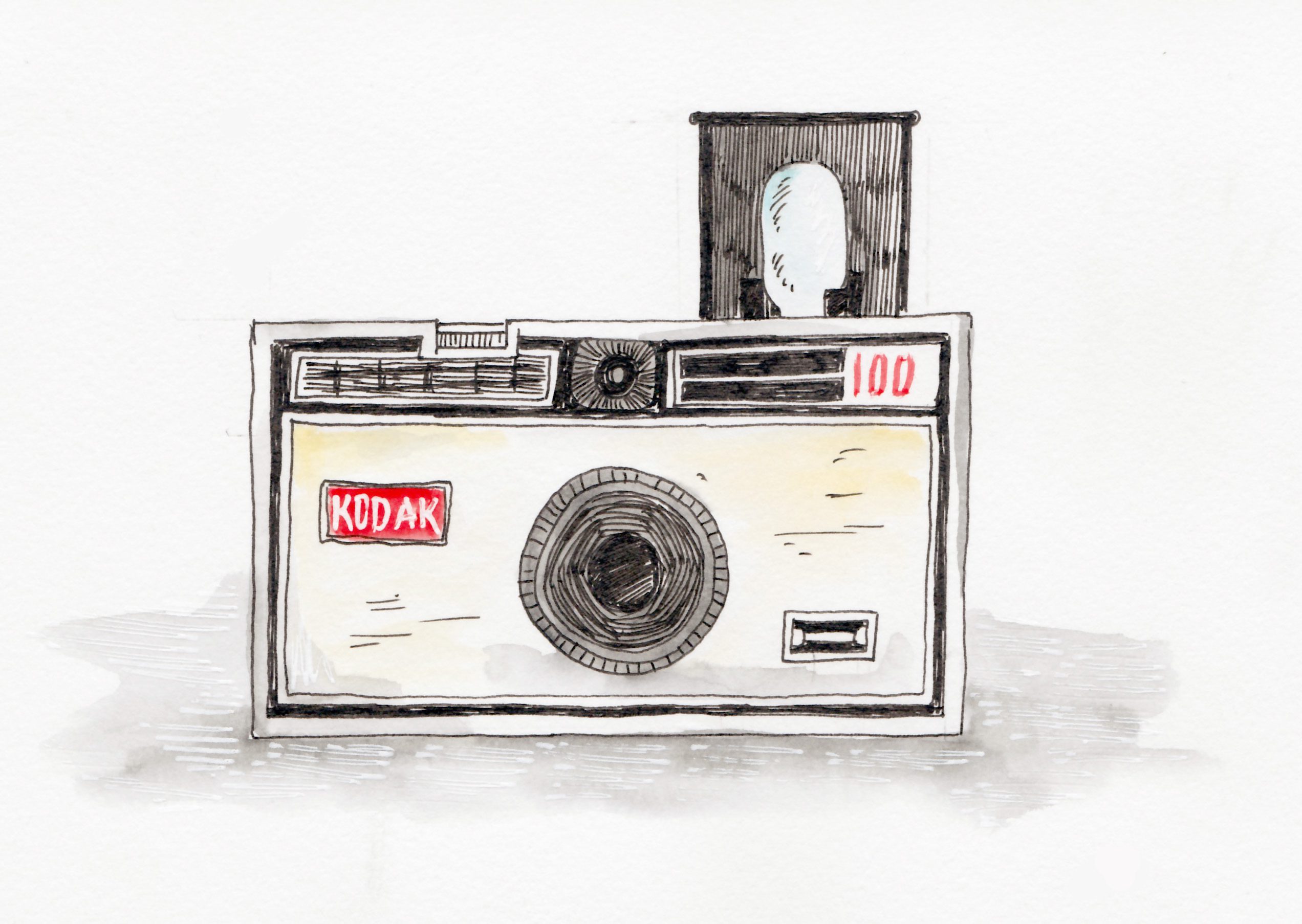 Everything in those years in Rochester was about seeing. Kodak’s launch of the Instamatic in 1963 would transform the city and it was the millions of those cameras made in the factories, and the thousands of workers needed to assemble them, needed to make the film to fill them, and market them, that made all that Western New York farmland turn into tract housing. The rising sales of those little cameras straight through the 1970s literally bankrolled the city’s suburban exodus, as if the very production of the camera produced the subjects it was meant to photograph.
Everything in those years in Rochester was about seeing. Kodak’s launch of the Instamatic in 1963 would transform the city and it was the millions of those cameras made in the factories, and the thousands of workers needed to assemble them, needed to make the film to fill them, and market them, that made all that Western New York farmland turn into tract housing. The rising sales of those little cameras straight through the 1970s literally bankrolled the city’s suburban exodus, as if the very production of the camera produced the subjects it was meant to photograph.
In those same years, unbeknownst to me, Kodak displayed what was then the largest photograph in the world, known as the Colorama, in Grand Central Station. Eight feet high and sixty feet wide, the Colorama displayed—invented really—mythical scenes from the national imagination on par with anything the Greeks could have sculpted into a temple pediment on the Acropolis. Put another way, the Colorama is like a national superego in photographic form.
Producing the images was a great technological feat, just as much the measure of the company’s singular importance to the nation, equal to filming John Glenn’s moon landing and transmitting it back to Houston and then relaying it to every American television set. The scale of the Colorama tested Kodak’s aspirations just as much as it did to figure out how to get a camera on the lunar orbiter or put pictures of the moon in our living rooms. The Colorama images were so ambitious in scale that, once developed, the transparencies were dried overnight in an abandoned swimming pool at Kodak’s employee recreation center.
I never saw the Colorama, because where I grew up the world was flat. By the time I got to New York City, which wasn’t until I was in my twenties, it was gone. But looking at them now, in an online archive, I can map both my closeness and distance from the scenes they compose—mostly distance. In one, there’s a Yosemite promontory, photographed on a grand scale that makes me think of Ansel Adams. And it turns out that’s because the great master of the Western landscape traded on his pristine black and white vision to make a color panorama of Bryce Canon, complete with a man holding a Kodak snapshot camera. There’s water skiers at Cypress Gardens, Florida; a staged scene of a summer cottage getting closed up for the season; a family camping on the shores of Lake Placid; an election day tableaux straight out of Norman Rockwell; The Junior Miss Pageant winners; Adams again, this time shooting the California Redwoods; a Western being filmed on a Universal Studios set; and the Apollo landing.
In a way, the Colorama photographs explain everything the way the commodity fetish explains the mystery of the commodity form in Capital. The illusion of our labor is what we want without knowing the source of our wanting. Colorama photographs do something similar—they promise a glossy dream, they set a scene, that by virtue of vision and imagination I can set myself into even as I recognize I am a character in an entirely different kind of story.
I did not know that in the same years I was learning to be a camera, to calibrate my actions against the dream world of photographs that I knew of without having seen them yet—the very same years that the Colorama was gracing Grand Central—that Diane Arbus, Garry Winogrand, and Lee Friedlander were roaming the country with their Leicas and the Rollies, elevating ordinary scenes from chance moments into art. I only knew that I started to see scenes. But like Arbus and Friedlander and Winogrand, I thought these scenes plucked from life might be strangely beautiful.
***
Rumpus original art by A.D. Puchalski.
